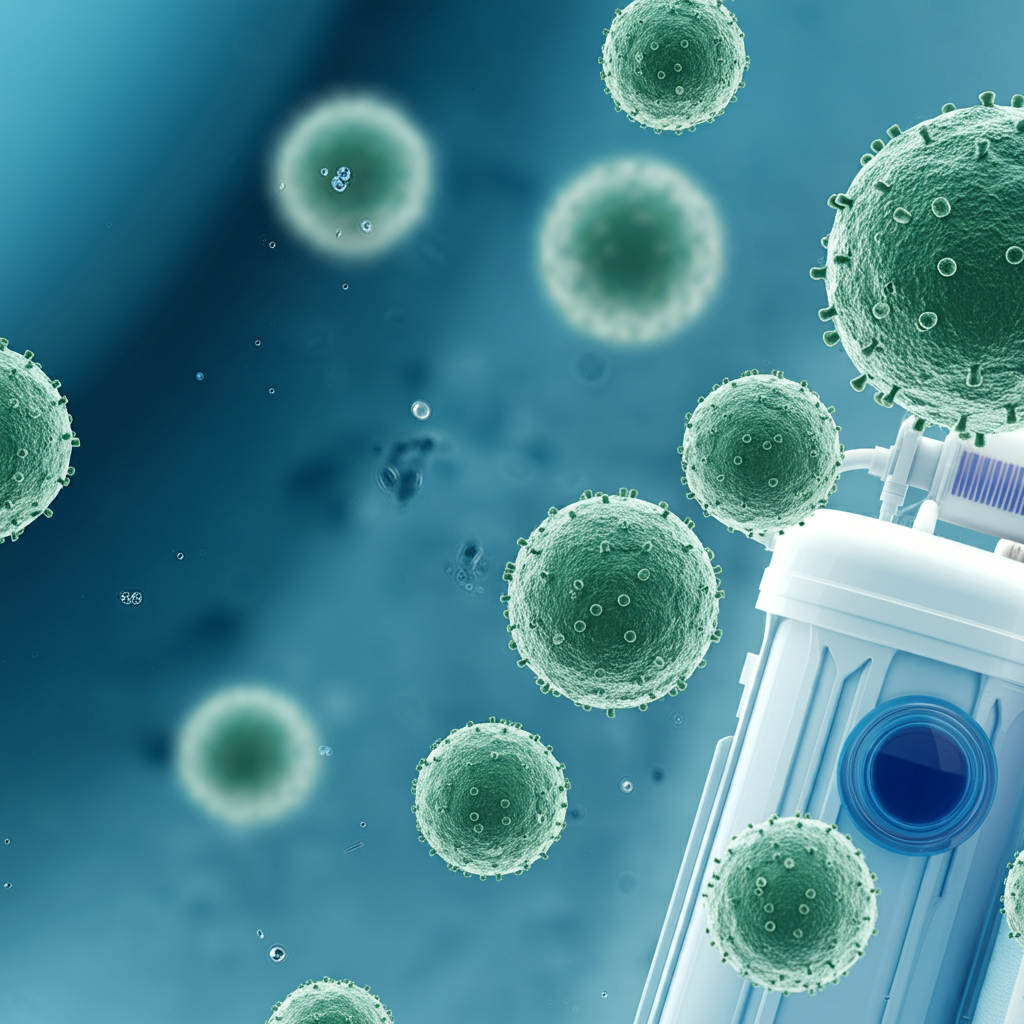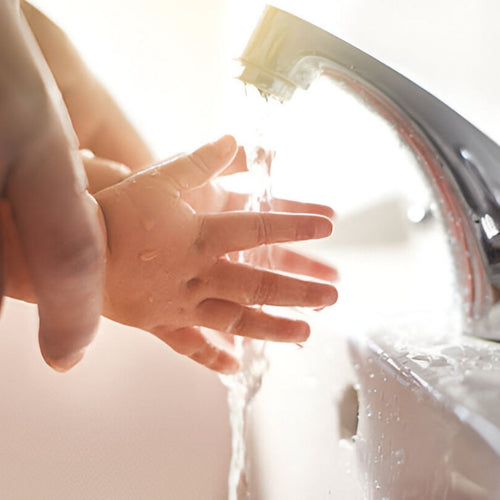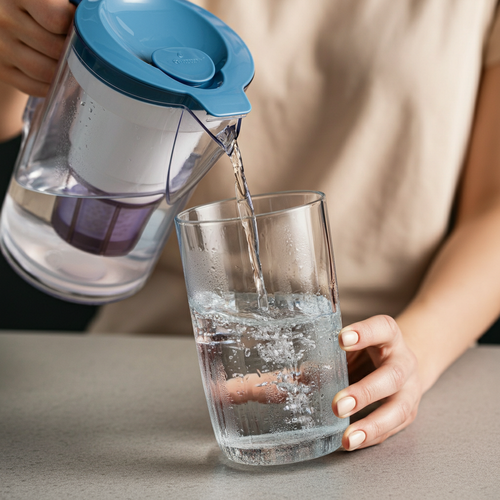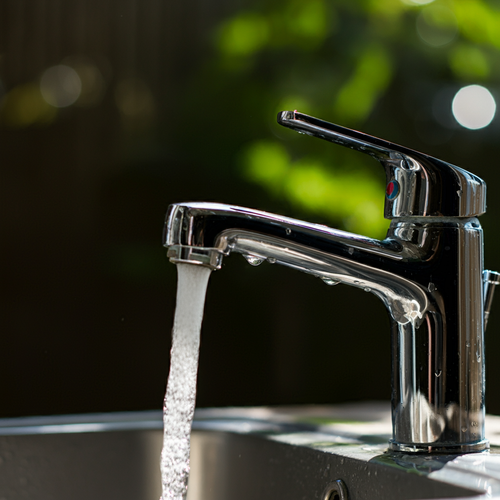Reverse osmosis (RO) systems are highly effective at removing a wide range of contaminants from water. These include common impurities like chlorine and sediment, and potentially harmful substances such as heavy metals (lead, mercury), pesticides, herbicides, nitrates, and fluoride. RO systems can even remove emerging contaminants like PFAS, which are becoming a growing concern in many water supplies.
At SoftPro Water Systems, we understand the importance of clean, safe drinking water for every household. That's why we utilize reverse osmosis filtration in many of our water treatment solutions. We believe in giving our customers the knowledge they need to make informed decisions about their water quality. By understanding how RO systems work and the specific contaminants they target, you can make the best choice for your family's health and well-being.
What is Reverse Osmosis?
Reverse osmosis is a water purification technology that uses pressure to force water through a semipermeable membrane. This membrane acts as a very fine filter, allowing water molecules to pass through while effectively blocking a wide range of contaminants.
The process typically involves several stages. First, water passes through pre-filters that remove larger particles like sediment and chlorine. Then, the water is forced through the semipermeable membrane, which separates the pure water from dissolved impurities. Finally, the purified water may pass through a post-filter to further refine its taste and odor before being stored in a tank for use.
While similar to other filtration methods like activated carbon filters, reverse osmosis is unique in its ability to remove dissolved solids. These include minerals, salts, and other impurities that cannot be effectively filtered by traditional methods. This makes RO a powerful tool for addressing a wider range of water quality concerns.
What Exactly Does an RO System Filter Out of My Water?
RO systems excel at removing a variety of impurities, improving both the health and taste of your water. Let's take a closer look at some of the specific contaminants that RO filtration effectively targets:
- Chlorine: Chlorine is commonly used to disinfect municipal water supplies, but it can leave an unpleasant taste and odor. RO systems effectively remove chlorine, resulting in fresher-tasting water.
- Sediment: Sediment, such as sand, rust, and dirt, can make water appear cloudy and affect the performance of appliances. RO systems remove these particles, improving water clarity and protecting your home's plumbing.
- Heavy Metals: Heavy metals like lead and mercury can pose serious health risks, even in small amounts. RO systems are highly effective at removing these contaminants, ensuring your drinking water meets safety standards set by organizations like the Environmental Protection Agency (EPA).
- Pesticides and Herbicides: These chemicals can enter water supplies through agricultural runoff or lawn care practices. RO systems remove these potentially harmful substances, providing peace of mind for you and your family.
- Nitrates: Nitrates often originate from fertilizers or septic systems and can be particularly harmful to infants. RO systems effectively reduce nitrate levels in drinking water.
- Fluoride: While fluoride is often added to water for dental health, some individuals prefer to remove it. RO systems provide that option, allowing you to control the fluoride content of your water.
Emerging Contaminants
- PFAS ("forever chemicals"): These persistent chemicals are found in many everyday products and have been linked to potential health problems. RO systems are one of the few effective methods for removing PFAS from drinking water.
- Pharmaceuticals and Microplastics: As research continues to uncover the presence of these contaminants in water supplies, RO systems offer a potential solution for reducing their impact on our health.
Real-world examples
- In areas with aging infrastructure, RO systems can filter out lead that may be leaching from old pipes.
- For homes with well water, RO can remove naturally occurring arsenic or other contaminants that may be present.
How Effective is Reverse Osmosis? Can I Rely on RO to Remove All Contaminants from My Water?
While reverse osmosis is highly effective, it's important to understand its limitations and how to maximize its performance.
Contaminant Removal Rates
RO systems typically remove 90-99% of common contaminants. For example, a well-maintained RO system can remove up to 98% of arsenic and 95% of lead from drinking water. However, removal rates can vary depending on factors like water pressure, water temperature, and the specific type of RO membrane used.
Limitations of RO
- Some bacteria and viruses: While RO membranes can remove some bacteria and viruses, they may not capture them all. For complete protection against microbial contamination, it's recommended to use a pre-filter or a UV disinfection system along with RO.
- Dissolved Gasses: RO systems may not effectively remove certain dissolved gasses like radon or volatile organic compounds (VOCs). If these are a concern in your water supply, specialized filtration methods may be necessary.
Importance of System Maintenance
Regular filter changes and membrane cleaning are essential to ensure the continued effectiveness of your RO system. Replacing filters according to the manufacturer's recommendations and periodically cleaning the membrane will prevent fouling and maintain optimal performance.
Why Should I Consider Installing an RO System in My Home?
Reverse osmosis filtration offers numerous advantages for your health, home, and the environment.
Health Benefits
Clean drinking water is essential for overall health and well-being. By removing harmful contaminants, RO systems contribute to:
- Reduced risk of heavy metal exposure
- Minimized ingestion of pesticides, herbicides, and other chemicals
- Improved hydration and overall health
Improved Taste and Odor
RO systems remove chlorine and other impurities that can negatively impact the taste and odor of water. This results in fresher, cleaner-tasting water that is more enjoyable to drink.
Cost Savings
Compared to the ongoing expense of bottled water, an RO system can provide significant cost savings in the long run. While there is an initial investment in the system itself, the cost per gallon of purified water is typically much lower than bottled water.
Environmental Impact
By reducing reliance on bottled water, RO systems help minimize plastic waste and its impact on the environment. This makes RO a more sustainable choice for accessing clean drinking water.
What Factors Should I Consider When Selecting an RO System for My Home?
At SoftPro Water Systems, we offer a variety of RO systems tailored to meet our customers' unique needs. Here are some key factors to consider when choosing a system:
- Water Quality Concerns: Start by getting your water tested to identify specific contaminants that need to be addressed. This will help you choose a system with proper filtration capabilities.
- Household Size and Water Usage: Consider the number of people in your household and your daily water use to choose a system with the appropriate capacity.
- Budget and Features: RO systems range from basic models to those with advanced features like remineralization or leak detection. Determine your budget and desired features to narrow your options.
SoftPro Water Systems Products
We offer a range of high-efficiency RO systems designed to provide clean, safe drinking water for your home. Explore our selection on our website, www.softprowatersystems.com, to find the perfect system for your needs.
Personalized Solutions
Our team of experts is available to provide personalized consultations and help you choose the right RO system for your specific water quality concerns and household requirements.
How Can I Ensure My RO System Continues to Provide Clean, Safe Water for Years to Come?
Proper maintenance is crucial for maximizing the lifespan and effectiveness of your RO system.
Filter Replacement
Filters should be replaced regularly to ensure optimal performance. The recommended replacement schedule will vary depending on factors like water usage and the quality of your incoming water. See manufacturer's guidelines for specific recommendations.
Membrane Cleaning
Periodically cleaning the RO membrane will prevent fouling and maintain its efficiency. Consult your system's manual for instructions on how to properly clean the membrane.
Troubleshooting Tips
If you experience issues with your RO system, such as low water pressure or leaks, refer to the troubleshooting section of your system's manual or contact our customer support team for assistance.
Where Can I Find More Information About Reverse Osmosis and Water Quality?
We encourage you to explore these resources for a deeper understanding of water filtration and the importance of clean drinking water:
- EPA website (www.epa.gov): This website provides information on drinking water standards and water treatment technologies.
- Water Quality Association (www.wqa.org): This organization offers resources on RO systems and water quality certifications.
- NSF International (www.nsf.org): This website provides a database of certified RO systems.
- Local water quality reports: Contact your local water utility or health department for information on water quality in your area.
Ensuring Pure Water: The Power of Reverse Osmosis
Reverse osmosis stands out as a highly effective water purification method, capable of removing a wide array of contaminants that can compromise water quality and potentially impact health. From common impurities like chlorine and sediment to more serious threats like heavy metals (lead, mercury, arsenic), pesticides, nitrates, and emerging contaminants such as PFAS, RO systems provide a comprehensive solution for cleaner, safer drinking water.
By utilizing a semi-permeable membrane, RO systems filter out dissolved solids and impurities that traditional filtration methods often miss. This technology not only improves the taste and odor of water but also significantly reduces health risks associated with contaminated water supplies.
While RO systems offer numerous benefits, including cost savings compared to bottled water and a positive environmental impact through reduced plastic waste, it's essential to understand their limitations. Regular maintenance, such as filter replacements and membrane cleaning, is crucial to ensure continued optimal performance.
At SoftPro Water Systems, we are dedicated to providing personalized water solutions tailored to your specific needs. Our range of high-efficiency RO systems, combined with expert consultation, empowers you to make informed choices for your home and family's well-being.
Key Takeaways:
- RO removes a broad spectrum of contaminants, including chlorine, sediment, heavy metals, pesticides, nitrates, fluoride, and PFAS.
- The semi-permeable membrane in RO systems filters out dissolved solids, providing comprehensive purification.
- Regular maintenance is essential for optimal RO system performance and longevity.
- RO offers cost savings and environmental benefits over bottled water.
Take Action for Cleaner Water
Get in touch with us today to learn more about our reverse osmosis systems and discover how we can help you achieve optimal water quality in your home.


















![Aldex Premium 10% Cross Link Resin for Water Softener [High Capacity]-SoftPro® Water Systems](http://www.softprowatersystems.com/cdn/shop/files/Aldex_10_Cross_Link_Resin_Premium_High_Capacity_for_Water_Softener_600x.jpg?v=1735853599)






















